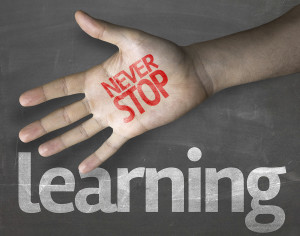Iterative Thinking is a Lifestyle
A student in a recent JIRA Boot Camp commented on how I described agile processes differently than a consultant her company had brought in. She noted that what I described seemed to make more sense. This got me thinking about those differences, why our approaches were different, and why it should matter.
 I read a lot and I see lots of commentary on agile software development. In many of the discussions the dialog is often very detailed, laced with procedure and process. This style of explanation leads to reactionary implementations that may not be well thought through. These implementations are like a thin coat of paint on a hard surface. It looks pretty but it does not go very deep. Companies that go down this path usually have a history of other such implementations of new ideas. Employees are used to it and respond with a surface change that only lasts until the next idea comes along or until nobody is looking.
I read a lot and I see lots of commentary on agile software development. In many of the discussions the dialog is often very detailed, laced with procedure and process. This style of explanation leads to reactionary implementations that may not be well thought through. These implementations are like a thin coat of paint on a hard surface. It looks pretty but it does not go very deep. Companies that go down this path usually have a history of other such implementations of new ideas. Employees are used to it and respond with a surface change that only lasts until the next idea comes along or until nobody is looking.
When I think about agile, continuous improvement, iterative project management, etc., I view these as tools to accomplish my goals. They are not the end all solution but a screwdriver to improve the productivity of my team. I do not blindly follow a methodology, I strategically apply these tools to accomplish my goals.
I decided when I was very young, watching various members of my grandparents generation, that I wanted to be a lifelong learner. I did not know what that meant at the time, but I knew I wanted to be like the intellectually engaged, vibrant seniors that I knew. I did not want to be stuck in a small personal world inhabited by a few people and the television set.
As a young engineer, many of the lean, downsizing focused approaches to business did not seem healthy to me. These were epitomized in the story of “Chainsaw” Al Dunlap and his approach to turning around companies. I was far more interested in what companies like Toyota and other leaders in “Lean Manufacturing” were learning. They seemed to be pushing for elimination of waste and just in time approaches that did not squeeze more production out of less but optimized the production of the staff you have. That was a mouthful so let me explain.
The Chainsaw approach cuts as much as possible, “cut to the bone” is the mantra. Toyota on the other hand pushed to improve their staff, processes, quality and production through a cycle of implementation, feedback, and adjustment. This was my first attraction to iterative change and I have adopted it as a way of life. I approach my business, my behavior, my hobbies, and my relationships with an idea that I can improve and get better.
Back to my student and her question. The reason I sound different is that an iterative approach is my way of life, not a process I promote. Agile is a process that has elements that really do improve the performance of teams. But like any tool it is not one size fits all. There are a number of agile principles we do not follow in my company, because they do not apply to our business. There are many that we do follow. We pick and choose when and how we use agile principles because we see it as a tool, not a religion, or something to sell.
Many consultants make a living selling agile processes. Most of them are quite good but a few will try to force ideas that do not make sense on an organization. These few are very much like some of our political leaders today. They want you to follow without understanding based on a promised result. This is not a way to run a business!
 As much as I like the agile way, I love the Baldrige Continuous Improvement Model. I believe it is the missing tool that helps the agile processes sink into the organization. Much more like paint permeating a porous surface. Paint on such a surface is very difficult to remove, this is the way you want good processes to be absorbed by your organization. Following the Baldrige model helps you focus on building up your staff, helping them grow and become lifelong learners. Help them achieve a new level of professionalism and/or productivity. By doing this the organization improves.
As much as I like the agile way, I love the Baldrige Continuous Improvement Model. I believe it is the missing tool that helps the agile processes sink into the organization. Much more like paint permeating a porous surface. Paint on such a surface is very difficult to remove, this is the way you want good processes to be absorbed by your organization. Following the Baldrige model helps you focus on building up your staff, helping them grow and become lifelong learners. Help them achieve a new level of professionalism and/or productivity. By doing this the organization improves.
If you have been implementing agile or other ideas because it is currently the “hot” thing and promises incredible results, then I encourage you to step back and evaluate. Look at the principles, look at the processes, consider which ones will improve your organization the most, and implement them. These are tools, not black and white affairs. They are a tool to be used to achieve the goals you have for your business and if used properly they can help your employees grow. Then everyone wins.
No comments yet.